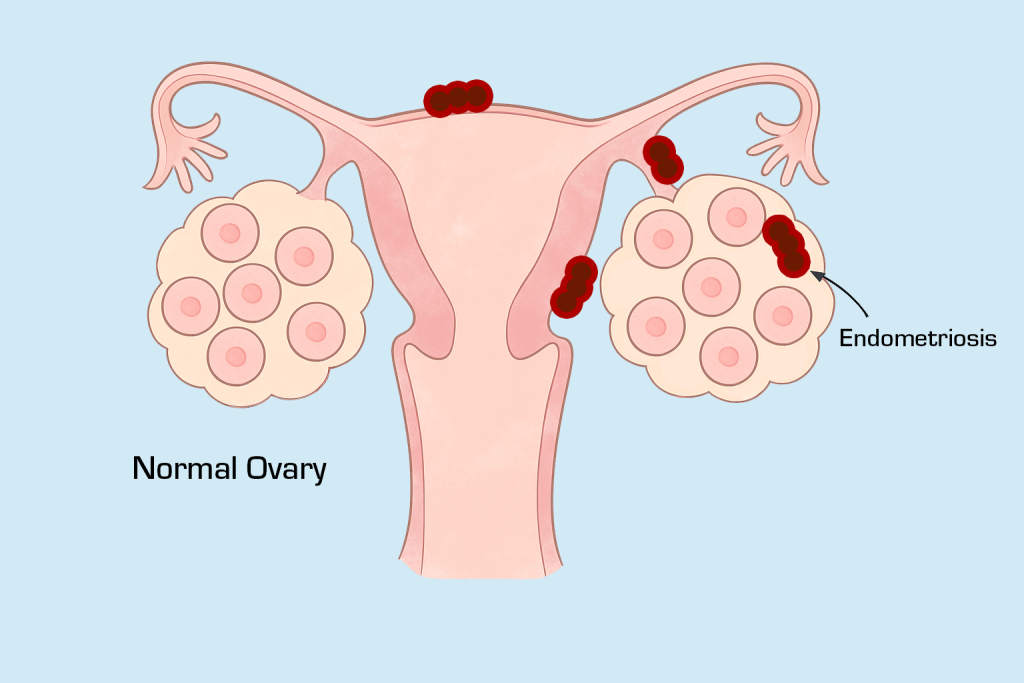What Is Endometriosis

Endometriosis is a condition in which tissue similar to the lining of the uterus (endometrium) grows outside the uterus. These growths can be found on the ovaries, fallopian tubes, outer surface of the uterus, and other pelvic organs. Unlike normal uterine lining, this tissue has no way to exit the body during menstruation, leading to inflammation, pain, and the formation of scar tissue.
Key Features
- Abnormal tissue growth outside the uterus
- Inflammation and adhesions that can affect reproductive organs
- Chronic pelvic pain that can worsen during menstruation
- Potential impact on fertility due to structural changes and inflammation
Symptoms
- Painful periods (dysmenorrhea)
- Pain during or after sexual intercourse
- Pelvic pain outside of menstruation
- Pain with bowel movements or urination during menstruation
- Heavy menstrual bleeding or spotting between periods
- Infertility or difficulty conceiving
How It Affects Fertility
Endometriosis can distort pelvic anatomy, block fallopian tubes, and create an inflammatory environment that interferes with egg release, fertilization, and embryo implantation.
Diagnosis
- Pelvic examination
- Transvaginal ultrasound to detect ovarian endometriomas
- MRI for detailed imaging
- Laparoscopy – the gold standard for diagnosis and treatment
Treatment Options
- Medications to manage pain and suppress endometrial growth (hormonal therapy)
- Laparoscopic surgery to remove lesions, scar tissue, and restore anatomy
- Fertility treatments such as IUI or IVF for those trying to conceive
Prevention
Currently, there is no proven way to prevent endometriosis, but early diagnosis and treatment can help reduce progression and protect fertility.